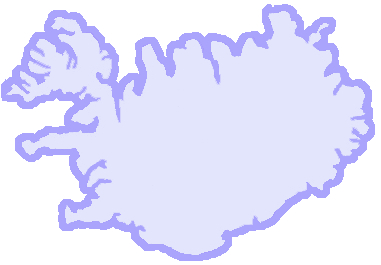THE DATABASE
Although, numerous excellent studies have been carried out on the effects of stress on harmful behaviour, no prior study has combined, as we propose, all of the following aspects in the same study in the same database:

1
Testing effects of life conditions from pre-birth, throughout childhood and into adolescence on stress and physiological, emotional and behavioural outcomes.
2
Examining the effects on multiple levels made possible with data from a whole cohort of Icelandic children, with nuanced measures on different levels; individual, family, school, neighbourhood and the larger community.
3
Combining environmental and physiological data to understand the processes and pathways through which the environment and biology interact to influence harmful behaviour.
4
Analysing numerous mediators during early adolescence, and outcomes later in adolescence; physiological, emotional, and behavioural, and thus providing a more thorough picture of the processes through which stress affects harmful behaviour.
5
Studying whether different forms of social support in early adolescence may have moderating effects, or perhaps may serve to reverse the negative effects of stress on harmful behaviour later in adolescence.

LONGITUDINAL DATA
Our retrospective longitudinal database will include existing registry information on maternal, child, and environmental determinants of adolescent harmful behaviours, measured prior to birth, at the time of birth, and during the infant, toddler, preschool, middle-childhood and early adolescent years, for the entire 2004 year birth cohort. We will prospectively measure biomarkers in human saliva and use an existing social survey infrastructure to add to the registry database.
ICELANDIC RESEARCH SETTING
The Icelandic research setting is uniquely well-suited for examining the effect of local community context on adolescent outcomes. The structure of neighbourhoods (public school attendance and neighbourhood residence are tightly coupled during childhood and adolescence) as well as existing registry data enable us to gather information on the whole cohort of children, including where they live at each time point. By using measures both from the Statistical Bureau of Iceland, as well as population based survey measures constructed from the Youth in Iceland studies on the whole cohort born in year 2004, we can draw up a unique description on individual as well as local community/neighbourhood levels. By following each child from pre-birth and onwards, we can hence measure the effects of local community context (as well as individual and family effects) on outcomes among individuals. This will enable an examination of long-term community effects on adolescent outcomes that no study has been able to draw up before.

RETROSPECTIVE REGISTRY DATA TYPES
Expectant mothers visit a healthcare centre for a regular check-up for a recommended at least seven times during pregnancy; after 12, 16, and 20 weeks, and during the last three months of pregnancy. In those visits information on mother’s mental and physical health and potential trauma experience during pregnancy, along with demographic information such as mother’s education and family structure, is registered.
To examine newborn status we use registry data available on all children born in Iceland from year 2000; including weight at birth, size at birth and length of pregnancy. This data bank also includes measures on mothers’ and fathers’ smoking during pregnancy.
Standardized developmental data at age 6 and 18 months and at 3.5 and 5 years from the national preventive child health services as indicated above.
These measures are collected as part of the Icelandic health care system. A developmental evaluation is conducted by professionals in health centres in Iceland on all children attending regular health care visits at the age of 6 and 18 months and at 3.5 years and 5 years. The evaluation includes measures of physical growth, fine motor and gross motor development, receptive language, expressive language, self-help, and social-emotional aspects of children’s development.
These data will be abstracted from records of the Reykjavik Child Protection Agency. Here we will include information of both the number and frequency of reports for each individual and cases that continue into further interventions and/or programs.
Information on school children will be accessed through a computerised data base gathered by school nurses on children at the age of 6 years and 10 years (ISKRA). The databank includes information on growth development and other health indicators as well as several life style indicators as reviewed above.
The local Bureau of Statistics provides structural information such as family income, parental legal cohabitation, separations and divorce rates, residential location and moving, as well as information on family financial support and unemployment benefits.
Since 1998 the ICSRA has conducted annual population-based cross-sectional surveys among 10-20 year old youth in Iceland that provide information from 85-90% of the population. The methodology of the survey data collection has been described elsewhere (e.g. Sigfusdottir et al. 2009; 2011; Kristjansson et al. 2008; 2010). Among measures are indicators of family well-being such as conflict, parental support and monitoring, neighbourhood cohesion and social capital. This information will be aggregated to the local community/neighbourhood level for various years in the lives of participants and therefore used to test hypotheses around higher level variation and supportive functions pertaining exclusively to the environment.
Lifecourse is proudly powered by WordPress